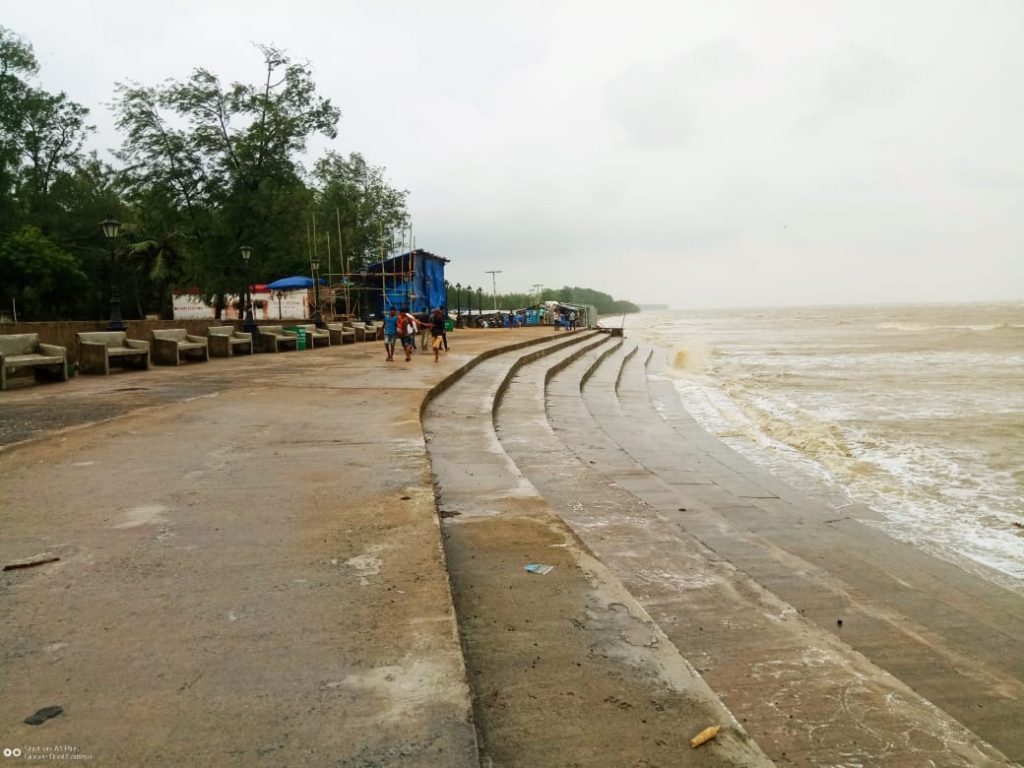Bhubaneswar: It is quite uncanny that Odisha has been witnessing cyclones in the month of October consistently since 2013. Before that, the Super cyclone occurred in 1999, that too in October. It seems as if cyclone has become an annual event in the state. The severe cyclone Phailin hit Gopalpur coast on October 12, 2013, evening while cyclone Hud Hud hit Visakhapatnam exactly on the same day in 2014. Both the cyclones caused devastation in the southern parts of Odisha.
Former Director of the Regional Meteorological Science Centre of the India Meteorological Department (IMD), Dr Sarat Chandra Sahu demystified the reasons for cyclones occurring in Odisha in the month of October. He is now the Director of the Centre for Environment and Climate (CEC) started by the SOA.

Causes of cyclone in October
“The main parameters of a cyclone are related to the temperature of the sea levels. If the sea-surface temperature is above 26.5 degree Celsius, then it will help in forming a low pressure. Due to this temperature, the air above these areas gets heated and therefore it rises up. With the increase in the rate of the temperature of the sea level, the low pressure intensifies,” Dr Sahu said.
“For cyclone ‘Titli’, the temperature of the coastal part of Odisha was 30 to 31 degree Celsius. As a result, low pressure was formed due to depression, deep depression, cyclonic storm, severe cyclonic storm and very severe cyclonic storm. Temperature is the main factor of this intensification,” he added.

How is a cyclone formed?
A cyclone is formed when warm temperature of the sea reaches a threshold level and the wind structure is rising.
Dr Sahu also said, “Another factor for the cyclone is wind shear and wind speed. We have started feeling summer from the month March and it is continuing till September/ October, though the impact of the sun’s rays is less from June to October. Humidity in the atmosphere increases the temperature level.”
He also informed that the heat-holding capacity of the sea is more than the earth because the seas are very deep. In October, extreme heat condition prevails in the sea and it supports to create depression. The fuel for a tropical cyclone is provided by a transfer of water vapour and heat from the warm ocean to the overlying air, primarily by evaporation from the sea surface. As the warm, moist air rises, it expands and cools, quickly becoming saturated and releasing latent heat through the condensation of water vapour.

How did Titli come about?
Cyclone ‘Titli’ made the landfall near Palasa in Srikakulam district to the southwest of Gopalpur as a very severe cyclonic storm with estimated maximum sustained surface wind speed of 140-150 kmph gusting up to 165 kmph between 4.30 am and 5.30 am on Thursday. “The temperature of the coastal part of Odisha was 30 to 31 degree Celsius. As a result, low pressure was formed due to depression, deep depression, cyclonic storm, severe cyclonic storm and very severe cyclonic storm. Temperature is the main factor for this intensification,” Dr Sahu said.

Hud Hud
Hud Hud was a strong tropical cyclone that caused extensive damage and loss of life in eastern India and Nepal during October, 2014. It originated from a low pressure system that formed under the influence of an upper-air cyclonic circulation in the Andaman Sea on October 6. It intensified into a cyclonic storm on October 8 and as a severe cyclonic storm on October 9. It touched near Visakhapatnam, Andhra Pradesh, on October 12.

Phailin
It hit the coast of Odisha on October 12, 2013. It brought very high speed winds and heavy rainfall that caused extensive damage, particularly to houses, standing crops and the power and communication infrastructure in the coastal districts of the state.
Phailin emerged in the Andaman Sea and moved west-northwest into an improving environment for further development before the system was named Phailin on October 9, after it had developed into a cyclonic storm and passed over the Andaman and Nicobar Islands into the Bay of Bengal.

Super Cyclone
The 1999 Odisha cyclone was the strongest recorded tropical cyclone in the North Indian Ocean and among the most destructive in Odisha. It made the landfall on October 29. Over 8,000 people had died in Jagatsinghpur district.

How Titli is different from Hud Hud and Phailin?
Both, cyclones Hud Hud and Phailin were following one direction. Phailin followed one direction and touched Gopalpur. Likewise, Hud Hud followed one direction and touched Vishakhapatnam.
But cyclone Titli changed the direction and instead of touching Gopalpur, it touched Palasa in Andhra Pradesh. So, the people of Gajapati and Rayagada experienced its impact.


